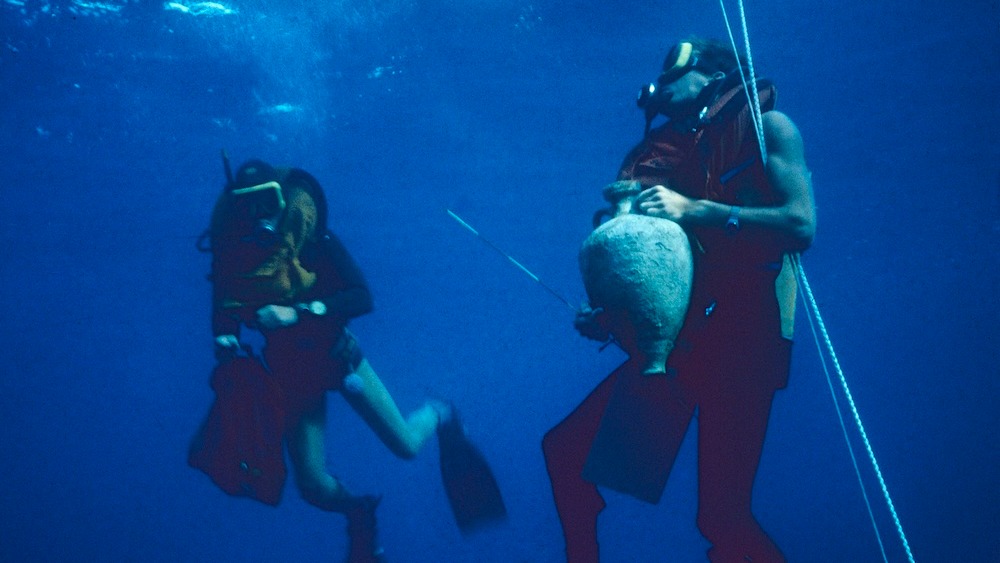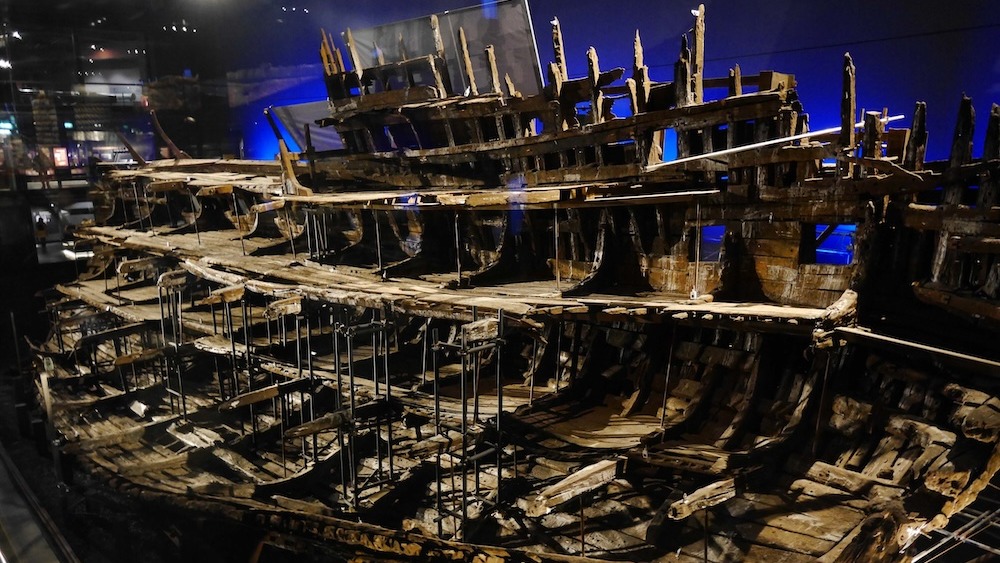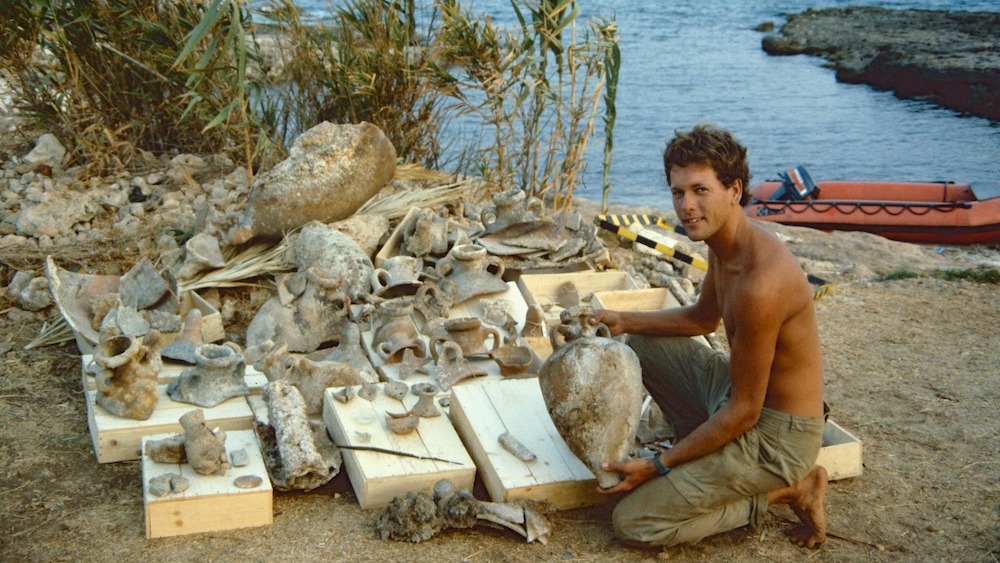
In his lifelong career as an underwater archaeologist, David Gibbins has explored dozens of shipwrecks around the world. Now, in his new book, "A History of the World in Twelve Shipwrecks" (St. Martin's Press, 2024), Gibbins takes readers along for the journey as he visits sites from the ancient Egyptians, the Vikings and beyond. Live Science talked with Gibbins about his experience as a diver and the ways ships were the force connecting the spread of people, religion and ideas around the world.
(This interview has been edited lightly for length and clarity.)
Jennifer Nalewicki: What initially sparked your interest in diving and eventually led you to write this book?
David Gibbins: As a small boy in the 1960s, I developed a fascination with diving. This was during a time of great adventure, when diving was as much a part of the great frontier due to people like Jacques Cousteau as space travel was. I was at that critical age when you tend to develop lifelong enthusiasms, so professionally, I became an archaeologist specializing in maritime archaeology.
I spent time teaching as an academic before becoming a full-time writer. I began developing an idea for a book that was scholarly but also accessible. The fact that my own experiences have taken me from the Bronze Age all the way to the 20th century in terms of sites that I've dived has allowed me to pick and choose which shipwrecks to include. This book is a bit autobiographical and is a fantastic way to delve into these sites and use them as a springboard to write an idiosyncratic history of the world.
JN: How is exploring shipwrecks different from investigating land-based archaeological sites?
DG: The overwhelming difference is that while diving, you're limited [by] the amount of time you can spend at a site. Even at shallow shipwrecks, you only have enough air supply to explore for about an hour and a half. That means that the kind of reflection you can engage in at a typical land dig site, where you're spending days wandering and looking at it, you can't really do underwater. The whole experience of working underwater is very much intensified by the physical constraints of diving.
There's also the environment, where you're doing something unfamiliar by going underwater. We think of diving as something that's accessible and done by a lot of people. But it still has that edge to it, since you must be aware of your limitations. How you excavate underwater is also different. I would say that underwater is often better because you can excavate with huge finesse using air lifts and dredging to take away the spoil and reveal things that are often better preserved underwater than they would be on land.
JN: In your book, you say that shipwrecks reveal a single moment in time. What do you mean by this?
DG: A typical wreck represents one extraordinary moment in time, which is an emotionally powerful thing, since you're not far from thinking of the people on the ship — and, very often, sadly, what happened to them. At land sites, you often see an accumulation of debris and discard over the course of many centuries, and the exactitude of the data collected from the site can be constrained because you're simply unable to associate the artifacts with each other unless they're stratigraphically defined. Whereas at a wreck, you can be confident that everything there was in use at the moment of destruction.
JN: You also wrote that shipwrecks provide access to individuals. How is that?
DG: One example is the wreck of the Mary Rose, [Henry VIII's warship] that sank off the coast of England in 1545. It went down so quickly that everything was preserved inside, including the physical remains of many of the people onboard. This is because the ship had anti-boarding rope strung over the top deck, trapping people as they tried to escape. The osteo-archaeological studies that have been conducted since the wreck was raised in 1992 have revealed so much about these individuals, who were largely nameless, including identifying their place of origin and diets. Even though they're anonymous, they paint an extraordinarily detailed picture of individuals at the time.

JN: In what ways did seafaring impact the spread of religion, cultures and ideas across the globe?
DG: Even in societies as early as the Bronze Age, we often think that people were isolated, but there was communication and transportation happening between different regions at that time. For example, I discuss a very basic vessel from the Bronze Age found in southern England. It showed that people had the capacity to travel quite considerable distances across the English Channel.
Another ship I mention is from the ninth century from the island of Belitung, Indonesia. This ship is fascinating because it shows the interconnections between classical antiquity and the rise of the medieval world and reflects that there was transport happening between places in the early-Islamic world [in what we now know as] Iran, Iraq, Arabia, Indonesia and China. This can be seen in the ship's cargo, which includes Chinese pottery coming west. I think wrecks are crucial to our understanding of the nature and extent of cultural communications over long distances.

JN: One shipwreck you included is a merchant ship that sailed during King Tut's reign. What do its contents tell us about the ancient Egyptians?
DG: There are a few very interesting artifacts, one of which is a gold scarab of [Queen] Nefertiti. Whether or not she had direct involvement with this vessel is unclear, but it's thought that pieces of gold that made their way from Egypt were being transported west to Mycenae, Greece. Enough Egyptian artifacts have been found to show that Bronze Age Greeks were engaged in diplomatic, social and economic interactions with Egypt.
JN: Are there any other shipwrecks out there that you hope to explore one day?
DG: In the last 60, 70 and 80 years of exploration in waters that scuba divers can reach, which is about 150 to 200 feet [45 to 60 meters] deep, many shipwrecks have already been found. What is still open for exploration is the huge expanse of much deeper waters. The Mediterranean is a very deep sea, and only the edges of it are accessible to divers. It's only been recently that exploration has begun on an intensive scale of wrecks in deeper waters.
One of the golden prizes of Mediterranean archaeology would be ships carrying works of art from Greece to Rome at the time that Rome conquered Greece in the second century B.C. A considerable proportion of those ships didn't make it, and I think there's a great hidden museum in the Mediterranean containing bronzes and other works of art just waiting to be found.







